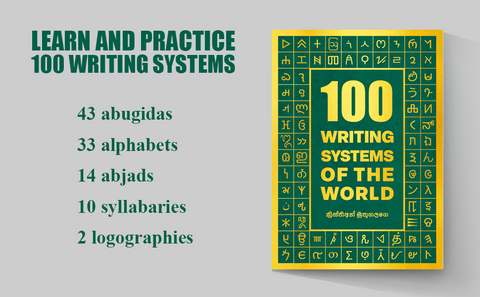Cracking the Code of the Mayan Hieroglyphs: A Journey Through Time and Culture

Script type: The Mayan hieroglyphs are a logosyllabic writing system, combining both logograms (symbols representing whole words) and syllabic elements (symbols representing individual syllables).
Writing direction: The Mayan hieroglyphs were typically written in a combination of left-to-right and top-to-bottom orientations, often arranged in blocks or columns.
Creator and invention time: The Mayan hieroglyphic writing system is believed to have originated around 300 BCE, with its full development occurring between 200 and 900 CE during the Classic Maya period. It is difficult to attribute the creation of the script to a single individual, as it likely evolved gradually over generations.
Time period of use: The use of Mayan hieroglyphs spanned several centuries, from around 300 BCE to the 16th century CE. However, after the Spanish conquest of the Americas, the use of the script declined significantly.
Population and current usage: The Mayan hieroglyphic script was primarily used by the Maya civilization, which inhabited parts of present-day Mexico, Guatemala, Honduras, El Salvador, and Belize. Today, no population actively uses the hieroglyphic script for everyday communication, but efforts are being made to preserve and study it.
Usage area: The Mayan hieroglyphs were used for various purposes, including recording historical events, religious rituals, astronomical observations, and royal genealogies. Inscriptions in the script can be found on stone monuments, ceramics, murals, and codices (ancient manuscripts).
Languages associated with the script: The Mayan hieroglyphs were used to write the Mayan languages, a group of related languages still spoken by indigenous communities in the Maya region today.
Interesting Facts:
-
Complex System: The Mayan hieroglyphs are one of the most complex writing systems in the world, consisting of over 800 unique symbols. The decipherment of the script was a challenging task that took decades of dedicated research by scholars.
-
Decipherment Breakthrough: The true understanding of the Mayan hieroglyphs began with the groundbreaking work of archaeologist and epigrapher, David Stuart, who made significant progress in deciphering the script in the 1980s and 1990s.
-
Codices and Their Secrets: The Maya had several codices, folding books made from bark paper, containing valuable information about their culture, astronomy, and religious practices. Only a few of these codices have survived due to Spanish efforts to destroy them during the colonization.
-
Long Count Calendar: The Mayan hieroglyphs allowed the Maya to develop an advanced calendar system known as the Long Count. It allowed them to record dates over long periods, including future events.
-
Enduring Legacy: Despite the decline of the hieroglyphic script after the Spanish conquest, the Mayan culture and languages still thrive among indigenous communities in the Maya region. Efforts to preserve and revitalize the script are ongoing, with modern Maya scholars contributing to its understanding and continuation.
The Mayan hieroglyphs are a testament to the intellectual achievements and cultural richness of the ancient Maya civilization. The decipherment of the script has opened doors to unraveling the mysteries of their history, religion, and societal structure. As we delve deeper into the intricacies of this ancient writing system, we gain valuable insights into the remarkable legacy of the Maya and the indelible mark they left on the world of ancient civilizations.

Practice Mayan and other scripts with our book "100 Writing Systems of the World"!
Discover 100 diverse writing systems from around the globe in one captivating book. Practice writing different scripts with full character charts and essential information provided. Let your imagination soar on the blank right pages as you explore 43 abugidas, 33 alphabets, 14 abjads, 10 syllabaries, and 2 logographic scripts. Dive into numeral systems and even design your own writing system. Immerse yourself in the beauty and diversity of global scripts today with "100 Writing Systems of the World." Unleash your creativity and order now!